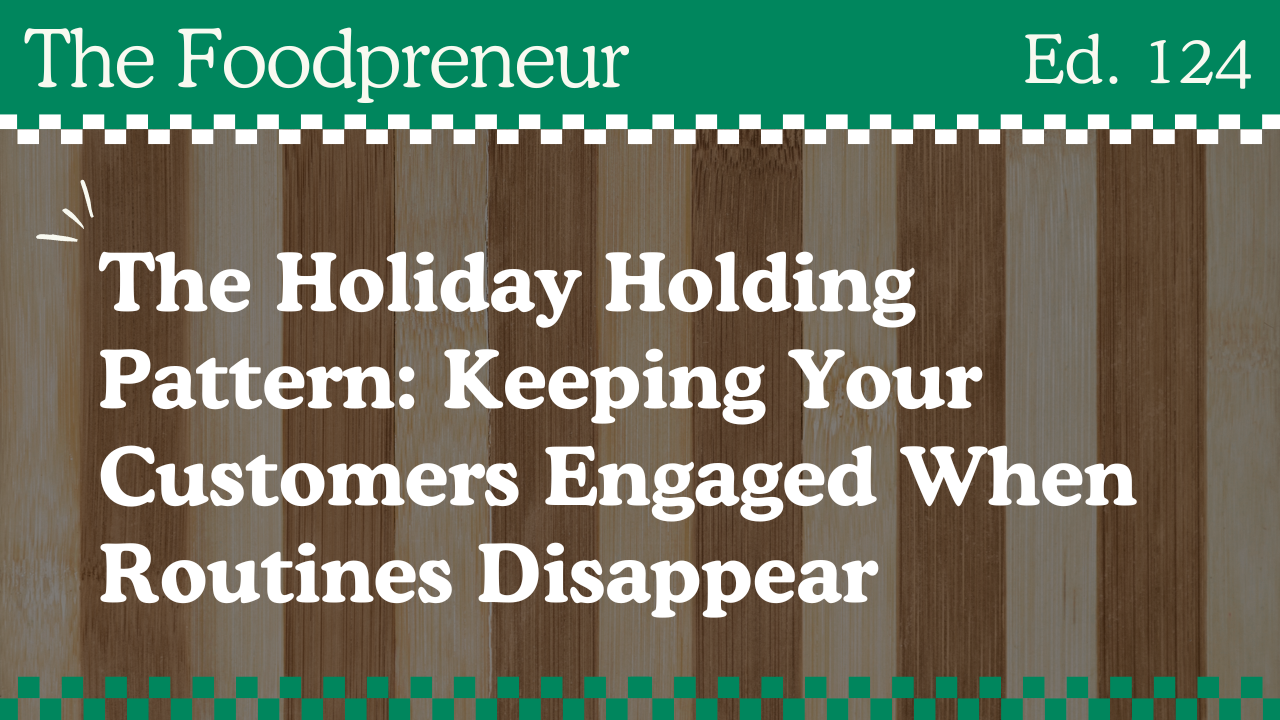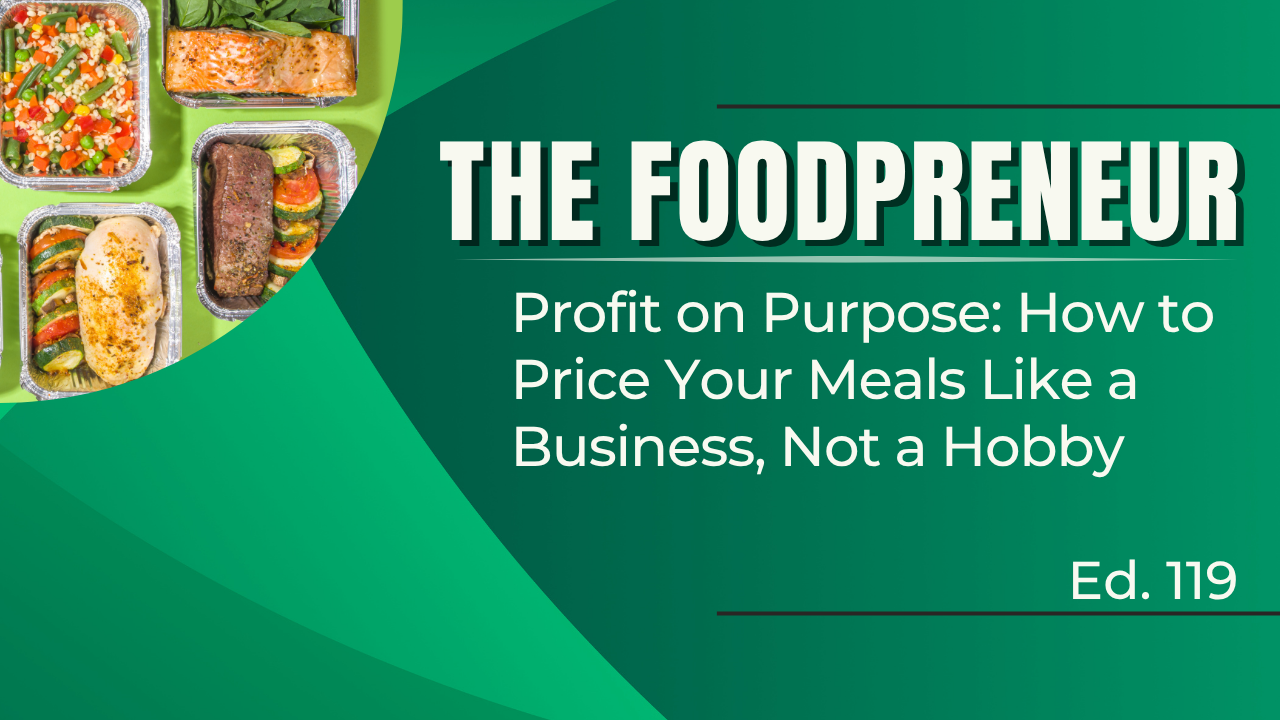

If you’re running a heat-and-eat meal delivery business, you already know the hustle. You shop, you prep, you portion, you package, you deliver and, if you're lucky, you squeeze in some marketing in between. But even with a loyal customer base and solid food, you may still be wondering: Why aren’t my profits growing?
The answer often lies in one overlooked area: pricing.
Too many meal business owners start with passion but price with emotion. They want to be affordable. They compare themselves to takeout. They feel guilty charging “too much.” But here’s the truth: if you don’t price your meals like a business, your business won’t last.
This post is your guide to pricing with purpose, backed by data, strategy, and the confidence to turn a good side hustle into a profitable, scalable operation.
The Problem with Passion-Driven Pricing
When you start a food business from scratch, it's natural to lead with heart. You love cooking. You love helping busy families eat better. You’re passionate about making healthy food more accessible. That mindset builds community and trust, but it can sabotage your bottom line.
Here’s what passion-driven pricing often looks like:
Eventually, you hit a wall. You’re working more hours, cooking more meals, but you’re not earning more money. Or worse, you’re dipping into personal funds to stay afloat. That’s when it’s time to shift your mindset from maker to owner.
The Goal Isn’t Just Sales, It’s Profit
It’s easy to confuse “selling out” with success. But just because you have a full prep schedule or hundreds of Instagram likes doesn’t mean your business is thriving.
Revenue is what you make. Profit is what you keep.
If you’re not building a healthy margin into every meal, then each order could be pushing you further from your goals. Scaling a business with shaky margins is like building a house on sand.
That’s why pricing isn’t just a marketing decision, it’s an operational strategy. Done right, it covers your true costs, supports sustainable growth, and reflects the real value of what you offer.
Start With Your Costs (and We Mean ALL of Them)
Before you can set profitable prices, you need to understand your true costs, not just your ingredients. There are three major cost categories to track:
These are the expenses that go into making each meal, including:
Track these per meal. If you’re using half a cup of quinoa or two ounces of salmon, make sure you’re calculating those costs precisely.
These are the costs that keep your business running, even if you're not prepping a single meal that day:
Estimate your monthly overhead, then divide by the average number of meals you sell per month. This gives you an overhead cost per meal.
Your time is valuable, even if you’re not paying yourself a salary yet. Calculate how many hours go into menu planning, shopping, prepping, packaging, cleaning, marketing, and delivery.
Now assign an hourly rate. Whether it’s $20/hour or $50/hour, your time must be factored into pricing if your business is going to be sustainable. Even if you reinvest that income into growth now, labor costs must be built into your model for the long haul.
Building a Pricing Formula That Works
Once you have your cost-per-meal (ingredients + overhead + labor), it’s time to add margin. That’s your profit.
A common formula looks like this:
Meal Price = Cost Per Meal x 2 to 3
Remember, profit isn’t optional so think twice before you adjust. That margin is what gives your business the ability to grow, pivot, weather inflation, hire help, upgrade packaging, or invest in a delivery vehicle.
And if you get pushback that your heat-and-eat meal delivery service is “too expensive.?” That’s OK. Not every customer will be the right fit. You’re not trying to be the cheapest option. Instead, you’re offering a quality product that delivers value, convenience, and time savings. It’s easy to lose sight of that when you’re starting or scaling your business.
Use Tiered Pricing to Maximize Value
Once you understand your baseline pricing, consider offering tiered options that align with customer behavior and increase average order value.
Here’s how that might look:
This is a great way to incentivize new and existing customers to commit to recurring subscriptions, giving you steadier, more predictable revenue while building loyalty. Subscriptions, bundles, and rewards programs all help you forecast demand, reduce prep-day uncertainty, and build more predictable revenue.
Don’t Be Afraid to Raise Prices
Price increases are a natural part of running any food business. Ingredient costs rise. Packaging gets more expensive. You outgrow your home kitchen and need to rent space. Your time becomes more valuable. If you’re still charging the same prices you did when you started, it’s probably time to reassess.
Here’s how to raise prices without alienating your customers:
Customers who truly value your service will understand. And those who leave were likely not profitable customers to begin with.
Anchor Your Price in the Value You Deliver
Heat-and-eat meals are more than just food. They’re a solution to a problem: lack of time, lack of energy, lack of healthy options. You’re not just selling chicken and rice—you’re selling peace of mind, convenience, and better living.
That value needs to be reflected in your pricing. Think about what your customers are really paying for:
Remind your customers of this regularly through your packaging, your social media, and your emails. Make your value clear and consistent. The more you reinforce the benefits, the easier it is to justify your prices.
Track the Right Metrics to Stay Profitable
Pricing is never “set it and forget it.” As your business grows, so do your variables. Keep an eye on these metrics each month:
If CLV isn’t at least 3x your CAC, you may need to raise prices or focus on retention strategies like subscriptions or loyalty rewards.
Your numbers are there to guide you, so make time to review them regularly. That’s what separates a hobby from a real business.
Common Pricing Mistakes to Avoid
Even seasoned business owners fall into these traps:
The Bottom Line: Price with Confidence, Not Apology
You didn’t start your business just to scrape by. You started it to make a difference for your customers and for yourself. That means pricing with purpose. Owning your value. Making decisions based on data, not guilt. And building a model that can scale sustainably.
So stop treating your business like a side gig. Stop apologizing for charging what you're worth. And start building pricing into the foundation of your success.
It’s time to stop guessing and start growing on purpose.
